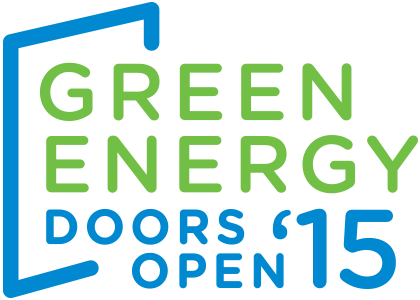By: Nancy Ghuman
This is a Green Energy Doors Open feature story. To learn more, visit greenenergydoorsopen.ca
The Children’s Teaching Kitchen puts sustainability first. Located in beautiful High Park, Toronto, the municipally-owned eco-friendly building is home to the Children’s Eco Programs – day camps, cooking programs and school field trips throughout the year where children ages 3-17 have the opportunity to learn about organic gardening, cooking, nature, and more.
The Children’s Eco Programs began in 1998, with most cooking related activities taking place under a picnic shelter in the garden. In 2006, after many years of cooking on camp stoves, and relocating to different parts of the City to host larger cooking programs, the staff decided a more permanent facility was needed.
A green building design was a must. As Robin Salt, Community Recreation Programmer at the Kitchen explains, “sustainability is very important to the Children’s Eco Programs, as their entire program is built around it. So The Children’s Teaching Kitchen had to follow the same philosophy. Also, not having a sustainable building made no sense, considering what we have been teaching the kids all these years.”
With that in mind, the City came up with the idea of constructing the building out of straw bales. Straw bale construction uses baled straw from wheat, oats, barley, rye and others in the walls of a building as an alternative for insulation. Straw bales are usually waste products from farmers, making them highly sustainable, cost effective and energy efficient. Impressively, The Children’s Teaching Kitchen is the first and only straw bale building owned by the City of Toronto.
As with all new construction in Toronto after January 31, 2010, the Kitchen also had to comply with the sustainable site and building design outlined in the Toronto Green Standards (TGS) Tier 1 performance measures, which ensures a level of efficiency, emissions reductions, and waste management.
Some other features on the new and improved building include a 10kW solar array, one several pilot projects of smaller arrays on city buildings. The building also features a green roof, which was mandatory under TGS and made possible thanks to generous donations. The roof acts as an insulator, keeping the building cooler in the summer and warmer in the winter months. It also acts as a great storm water catcher, reducing the amount of storm water that ends up in sewers.
Robin believes that this green building is an example of the shift towards green infrastructure and the renewable energy interests of the City. It took six years of hard work, determination, and overcoming challenges to complete the Kitchen.
Because of its smaller size, the Kitchen presents opportunities for people to learn about possible sustainable options for their own homes. The Kitchen is hoping to develop new programs in the near future around renewable energy and sustainable building solutions for all community members. Currently, along with cooking and gardening programs, the Kitchen hosts field trips for grades 3, 5 and 10, where the students can learn about renewable energy as a part of their school curriculum.
The Children’s Eco Programs are really looking forward to showing off The Children’s Teaching Kitchen at Green Energy Doors Open 2015. The Kitchen feels that it is a great opportunity for the City to show the public that Toronto is taking action on sustainability and renewable energy. This year, the staff of the Kitchen hope to show the public how much fun you can have in a sustainable building.
Nancy Ghuman is in her final year of her Master in Environmental Studies degree at York University. She is interested in Community Energy Planning, and is focusing her thesis research on developing an energy plan for a rural community in Costa Rica.
